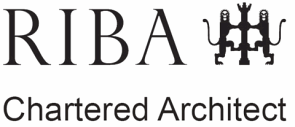Designing an Oak Frame Conservatory: Key Considerations for Homeowners
Oak frame conservatories are a beautiful way to enhance your property and invite natural light and garden views into your home.
Whether you’re looking to replace an existing uPVC conservatory or extend the footprint of your home, an oak frame conservatory provides a beautiful aesthetic that can work in both traditional and modern homes.
If you’re considering an oak frame conservatory, read on to find out more about the factors that need to be taken into consideration.
Why Choose Oak?
Oak is a fantastic choice, and one favoured by many homeowners because it suits both period and contemporary homes.
It’s a great material to build with, thanks to its durability and strength, but the natural beauty of oak is such a timeless aesthetic and one that adds texture and warmth to any home.
Do I need planning permission for an oak frame conservatory?
An oak frame conservatory falls under the same planning rules as any other house extension.
If you meet the criteria of Permitted Development rights, you may be able to avoid the full planning process, although it is always advisable to gain a lawful certificate of development.
However, if your property is based in a conservation area Permitted Development rights are restricted and the likelihood is that you’ll need to obtain planning consent from the local authority.
You may also be able to build the conservatory without building regulations, as long as the planned build meets certain conditions, such as external walls and windows separate the conservatory from the main house, the floor area is less then 30 sqm certain criteria, and the heating system is independent of your home.
However, you will need Building Control approval if you need to form a new structural opening between the house and conservatory. If you plan to replace an existing uPVC conservatory you’ll also need to consider the foundations as the new oak structure will be far heavier than the previous structure.
If you aren’t sure, our team of experts can advise.
Design considerations
Now to the exciting part – designing your oak frame extension. There are plenty of options, but here are the main points to consider:
Glazing
Doors can be incorporated, and bifold or sliding are a great choice. It’s also important to consider ceiling glazing, which depending on the orientation of the build, could include a glazed ceiling, or roof lights or skylights to provide natural light.
Heating and ventilation
Most oak frame conservatories include a large amount of glazing and window space, which means standard radiators are generally not an option. Under-floor heating is a great choice, as well as a log burning stove. During the warmer months, you might be able to rely on solar gain to heat the conservatory.
Ventilation
As with any project that incorporates a lot of glazing, you’ll need to ensure the room has adequate ventilation to prevent overheating in the warmer months and provide a comfortable temperature all year round. Window and roof vents are popular, as well as ceiling and extractor fans.
Oak Frame Extension – Pros and Cons
If you’re still wondering if an oak frame conservatory is right for you, let’s consider the pros and cons:
Pros
- Timeless appeal: The natural beauty of oak adds character to any property.
- Strength and durability: Oak is a long-lasting and durable material and will certainly outlast other types of building materials such as uPVC.
- Sustainable choice: Responsibly sourced oak from an FSC-certified forest is a much more environmentally friendly way to build.
- Thermal performance: with inherent insulating properties, oak will add thermal efficiency to your build.
- Adds property value: A well-designed oak frame extension can increase the value of your property.
Cons
- Cost: Oak frame extensions can be more expensive than other materials due to the craftsmanship and material costs. Although, it is important to weigh this up against the durability of the structure as mentioned above.
- Movement and shrinkage: Green oak shrinks as it dries, requiring design allowances for movement.
- Maintenance: Although durable, oak will take on a silvery hue as it ages and weathers, which is part of the appeal for many. However, If you’d like to maintain the original colour, annual maintenance is required.
- Design limitations: The size and placement of beams may restrict design details such as lighting and plug sockets (if you are considering floor to ceiling glazing). However, most of this can be resolved with a detailed design.
To find out more, and to discover if your property could benefit from an oak frame conservatory, get in touch with the T&C team.





